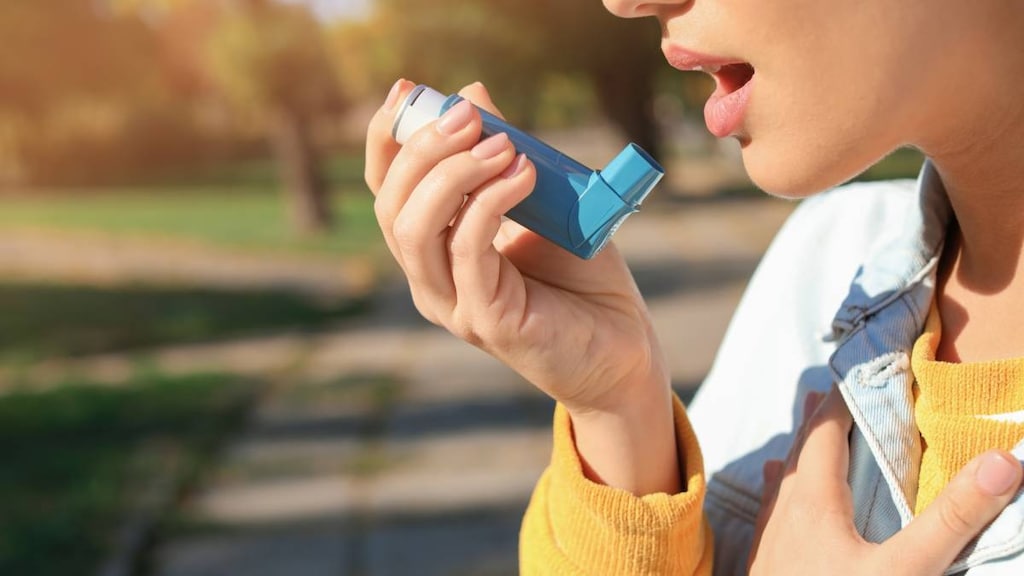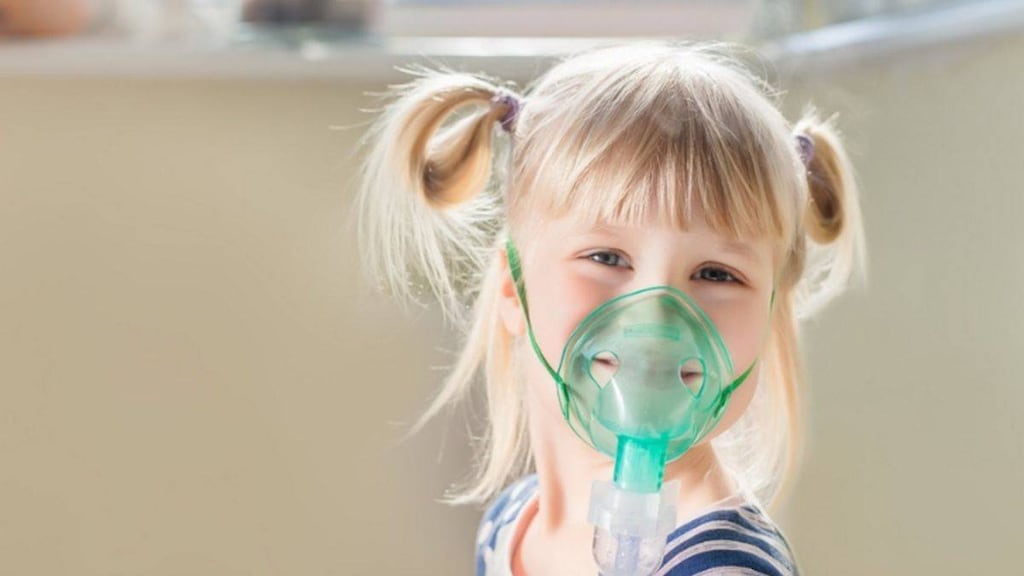Dosage Forms
Excipient information presented when available (limited, particularly for generics); consult specific product labeling.
Nebulization Solution, Inhalation, as sodium:
Generic: 20 mg/2 mL (2 mL)
Nebulization Solution, Inhalation, as sodium [preservative free]:
Generic: 20 mg/2 mL (2 mL)
Pharmacology
Mechanism of Action
Prevents the mast cell release of histamine, leukotrienes, and slow-reacting substance of anaphylaxis by inhibiting degranulation after contact with antigens
Pharmacokinetics/Pharmacodynamics
Absorption
Inhalation: ~8% reaches lungs upon inhalation; well absorbed
Excretion
Equally excreted unchanged in urine and feces (via bile); after inhalation, small amounts are exhaled
Time to Peak
Serum: Inhalation: ~15 minutes
Half-Life Elimination
80 to 90 minutes
Use: Labeled Indications
Prophylactic agent used for long-term (chronic) control of asthma; prevention of exercise-induced bronchospasm
Contraindications
Hypersensitivity to cromolyn or any component of the formulation
Dosage and Administration
Dosing: Adult
Asthma: Nebulization solution: Initial: 20 mg 4 times/day; usual dose: 20 mg 3 to 4 times/day
Note: For chronic control of asthma, taper frequency to the lowest effective dose (ie, 4 times/day to 3 times/day to twice daily). Not effective for immediate relief of symptoms in acute asthmatic attacks; must be used at regular intervals for 2 to 4 weeks to be effective.
Prophylaxis of bronchospasm (allergen- or exercise-induced): Nebulization solution: 20 mg (single dose), administer 10 to 15 minutes prior to exercise or allergen exposure
Dosing: Geriatric
Refer to adult dosing.
Dosing: Pediatric
Asthma, maintenance therapy: Note: Due to lower efficacy relative to other therapies, current expert recommendations do not recommend cromolyn for initial treatment of persistent asthma in children (GINA 2015; NAEPP 2007); cromolyn is considered an alternative medication for the treatment of mild persistent asthma in children (NAEPP 2007).
Children ≥2 years and Adolescents: Nebulization solution: Initial: 20 mg 4 times daily; usual dose: 20 mg 3 to 4 times daily; must be used at regular intervals for 2 to 4 weeks to be effective. Note: Once control is achieved, taper frequency to the lowest effective dose (eg, 4 times daily to 3 times daily to twice daily).
Exercise- or allergen-induced bronchospasm; prevention: Children ≥2 years and Adolescents: Nebulization solution: 20 mg as a single dose; Note: Administer 10 to 15 minutes prior to exercise or allergen exposure but no longer than 1 hour before.
Administration
Oral inhalation: Squeeze contents of the unit-dose vial into the solution container of nebulizer. Nebulization should take approximately 5 to 10 minutes.
Storage
Store at room temperature of 15°C to 30°C (59°F to 86°F). Protect from light.
Drug Interactions
There are no known significant interactions.
Adverse Reactions
Frequency not always defined.
Central nervous system: Drowsiness
Dermatologic: Burning sensation of the nose, pruritus of nose
Gastrointestinal: Nausea, stomach pain
Hypersensitivity: Serum sickness
Respiratory: Cough (20%; transient), wheezing (4%; mild), epistaxis, nasal congestion, sneezing
<1%, postmarketing, and/or case reports: Anaphylaxis, anemia, angioedema, arthralgia, bronchospasm, dizziness, dysuria, exfoliative dermatitis, headache, hemoptysis, hoarseness, joint swelling, lacrimation, laryngeal edema, nephrosis, myalgia, parotid gland enlargement, pericarditis, peripheral neuritis, photodermatitis, polymyositis, pulmonary infiltrates (with eosinophilia), skin rash, urinary frequency, urticaria, vasculitis (periarteritis), vertigo
Warnings/Precautions
Concerns related to adverse effects:
- Anaphylaxis: Severe anaphylactic reactions may occur rarely
- Bronchospasm: May occur with cough after inhalation; if this occurs, treat with a fast-acting bronchodilator.
Disease-related concerns:
- Asthma: Not to be used in the treatment of status asthmaticus.
Other warnings/precautions:
- Withdrawal: Caution should be used when withdrawing the drug or tapering the dose as symptoms may reoccur.
Monitoring Parameters
Periodic pulmonary function tests
Pregnancy
Pregnancy Risk Factor
B
Pregnancy Considerations
Adverse events were not observed in animal reproduction studies following SubQ administration. Limited data suggest little or no placental transfer (Brogden 1974). Uncontrolled asthma is associated with adverse events on pregnancy. Although cromolyn sodium is considered to have a good safety profile, due to decreased efficacy, other agents are preferred for the control of asthma in pregnancy (GINA 2018).
Patient Education
- Discuss specific use of drug and side effects with patient as it relates to treatment. (HCAHPS: During this hospital stay, were you given any medicine that you had not taken before? Before giving you any new medicine, how often did hospital staff tell you what the medicine was for? How often did hospital staff describe possible side effects in a way you could understand?)
- Patient may experience cough, stuffy nose, nausea, or sneezing. Have patient report immediately to prescriber difficulty breathing or persistent cough (HCAHPS).
- Educate patient about signs of a significant reaction (eg, wheezing; chest tightness; fever; itching; bad cough; blue skin color; seizures; or swelling of face, lips, tongue, or throat). Note: This is not a comprehensive list of all side effects. Patient should consult prescriber for additional questions.
Intended Use and Disclaimer: Should not be printed and given to patients. This information is intended to serve as a concise initial reference for health care professionals to use when discussing medications with a patient. You must ultimately rely on your own discretion, experience, and judgment in diagnosing, treating, and advising patients.



